



India’s latest All India Elephant Estimation (2021–25) reports 22,446 wild elephants, the largest population globally. Most elephants are concentrated in the Western Ghats (11,934) and Northeast (6,559) regions. However, challenges such as habitat loss, fragmentation, mining activities, and rising human–elephant conflicts persist. The new scientific census provides an updated baseline for future conservation efforts under Project Elephant, highlighting the need for stronger habitat protection, corridor restoration, and coexistence strategies.
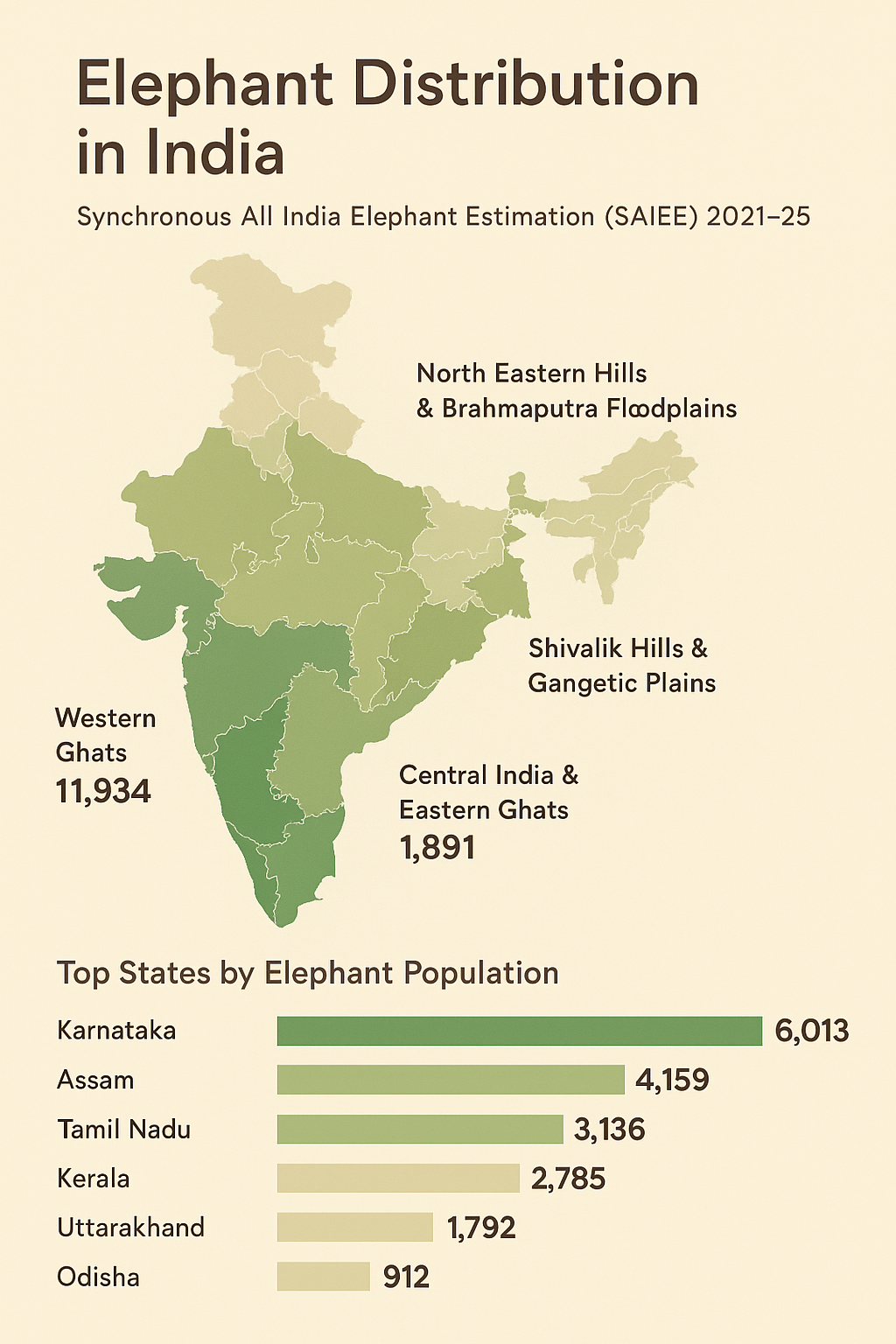
Copyright infringement not intended
Picture Courtesy: Indian Express
The results of the Synchronous All India Elephant Estimation (SAIEE) 2021–25 were released in October 2025 after a delay of over a year. Conducted by the Union Environment Ministry and the Wildlife Institute of India (WII), the survey estimates India’s wild elephant population at 22,446, highlighting both positive conservation outcomes and continuing threats to the species.
|
Region / Landscape |
Estimated Population |
Share of Total (%) |
Key States Covered |
|
Western Ghats |
11,934 |
~53% |
Karnataka, Tamil Nadu, Kerala, Maharashtra |
|
North Eastern Hills & Brahmaputra Floodplains |
6,559 |
~29% |
Assam, Arunachal Pradesh, Meghalaya, Nagaland, Tripura, Mizoram |
|
Shivalik Hills & Gangetic Plains |
2,062 |
~9% |
Uttarakhand, Uttar Pradesh, Bihar, West Bengal (South) |
|
Central India & Eastern Ghats |
1,891 |
~8% |
Odisha, Jharkhand, Chhattisgarh, Madhya Pradesh, Andhra Pradesh |
|
Total (India) |
22,446 |
100% |
— |

India’s elephants face several long-term conservation challenges:
Project Elephant (1992):
Elephant Corridors:
Gaj Yatra Campaign (2017):
Conflict Mitigation:
Technology & Monitoring:
Legal Protection:
Regional Cooperation:
Expand Elephant Corridors:
Reduce Human–Elephant Conflicts:
Habitat Restoration:
Community-Based Conservation:
Regional & Technological Cooperation:
Source: Indian Express
|
Practice Question Q.Discuss the key challenges in elephant conservation in India and suggest effective measures and policy interventions to ensure long-term habitat protection and human–elephant coexistence. (250 words) |
As per the Synchronous All India Elephant Estimation (SAIEE) 2021–25, India has 22,446 wild elephants.
Karnataka has the highest population with 6,013 elephants, followed by Assam (4,159) and Tamil Nadu (3,136).
Launched in 1992 by the Ministry of Environment, Forest and Climate Change (MoEFCC), it focuses on elephant conservation, habitat protection, and reducing human–elephant conflicts.
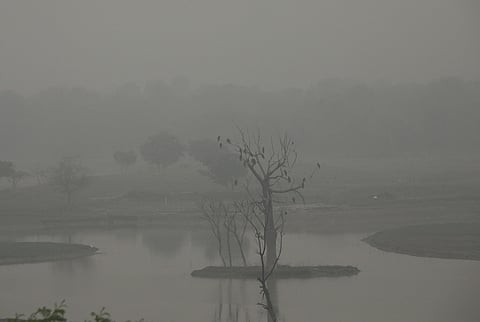


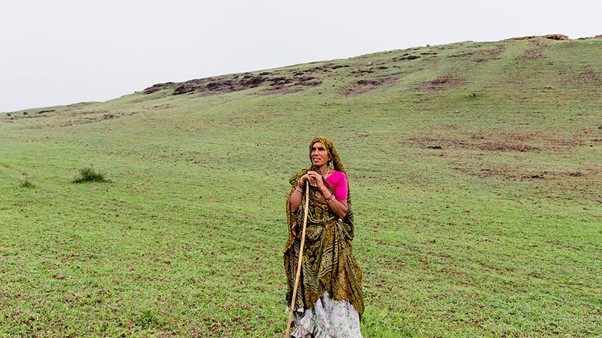
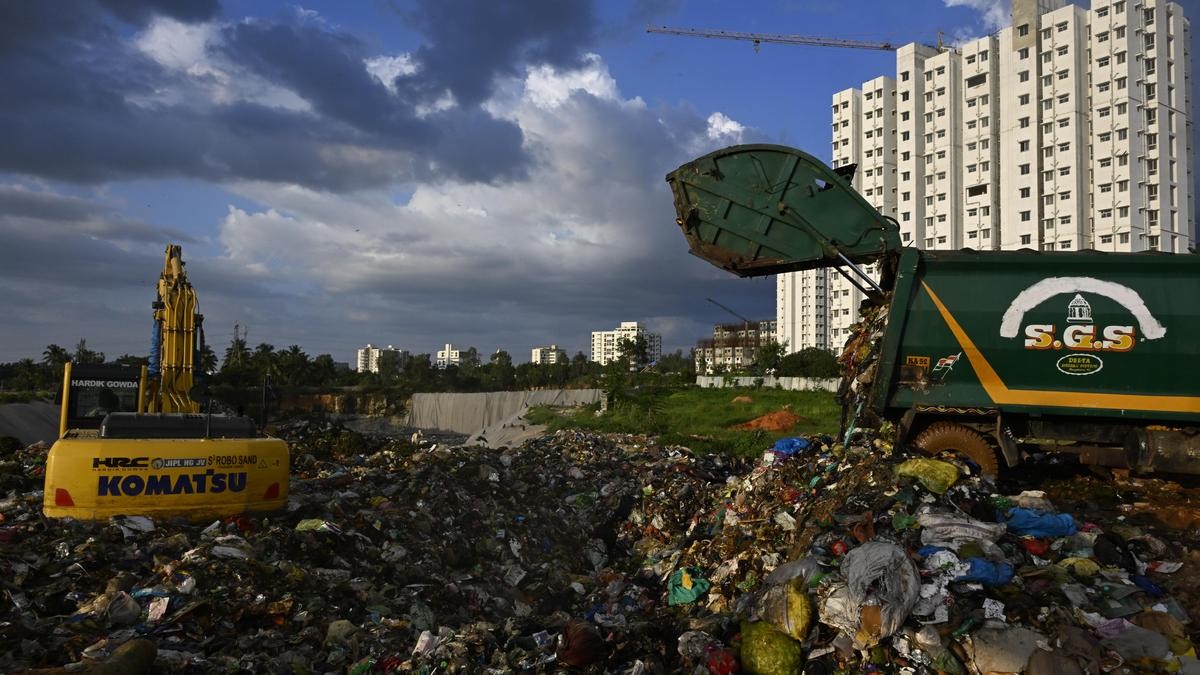
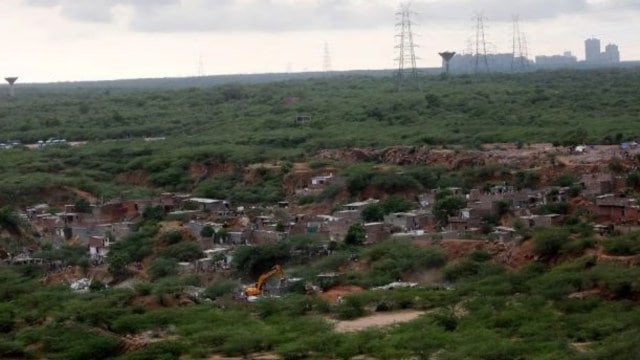

© 2025 iasgyan. All right reserved